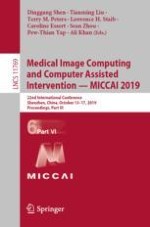2019 | OriginalPaper | Buchkapitel
NoduleNet: Decoupled False Positive Reduction for Pulmonary Nodule Detection and Segmentation
verfasst von : Hao Tang, Chupeng Zhang, Xiaohui Xie
Erschienen in: Medical Image Computing and Computer Assisted Intervention – MICCAI 2019
Aktivieren Sie unsere intelligente Suche, um passende Fachinhalte oder Patente zu finden.
Wählen Sie Textabschnitte aus um mit Künstlicher Intelligenz passenden Patente zu finden. powered by
Markieren Sie Textabschnitte, um KI-gestützt weitere passende Inhalte zu finden. powered by
